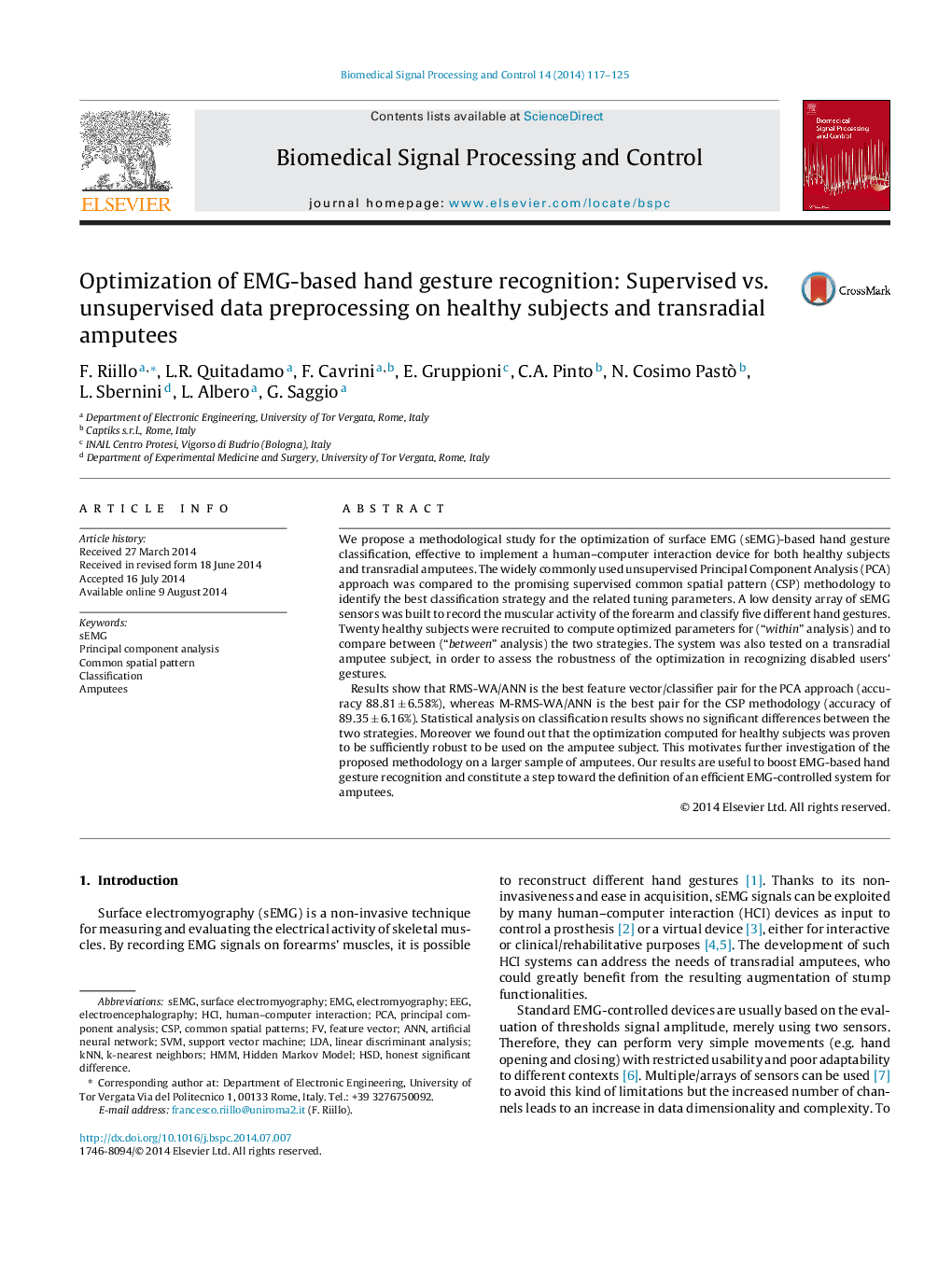| کد مقاله | کد نشریه | سال انتشار | مقاله انگلیسی | نسخه تمام متن |
|---|---|---|---|---|
| 558009 | 1451666 | 2014 | 9 صفحه PDF | دانلود رایگان |

• An optimization study on EMG-based hand gesture recognition is proposed.
• We compare unsupervised PCA vs. supervised CSP preprocessing technique.
• Artificial neural network achieves best classification accuracies in both cases.
• The study identifies the best parameters to choose in pattern recognition stages.
• The optimization algorithm is robust enough to be used on amputees as well.
We propose a methodological study for the optimization of surface EMG (sEMG)-based hand gesture classification, effective to implement a human–computer interaction device for both healthy subjects and transradial amputees. The widely commonly used unsupervised Principal Component Analysis (PCA) approach was compared to the promising supervised common spatial pattern (CSP) methodology to identify the best classification strategy and the related tuning parameters. A low density array of sEMG sensors was built to record the muscular activity of the forearm and classify five different hand gestures. Twenty healthy subjects were recruited to compute optimized parameters for (“within” analysis) and to compare between (“between” analysis) the two strategies. The system was also tested on a transradial amputee subject, in order to assess the robustness of the optimization in recognizing disabled users’ gestures.Results show that RMS-WA/ANN is the best feature vector/classifier pair for the PCA approach (accuracy 88.81 ± 6.58%), whereas M-RMS-WA/ANN is the best pair for the CSP methodology (accuracy of 89.35 ± 6.16%). Statistical analysis on classification results shows no significant differences between the two strategies. Moreover we found out that the optimization computed for healthy subjects was proven to be sufficiently robust to be used on the amputee subject. This motivates further investigation of the proposed methodology on a larger sample of amputees. Our results are useful to boost EMG-based hand gesture recognition and constitute a step toward the definition of an efficient EMG-controlled system for amputees.
Journal: Biomedical Signal Processing and Control - Volume 14, November 2014, Pages 117–125